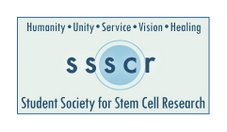Stem cells help stroke victims
According to two studies published in the current issue of Cell
Transplantation (Vol.16 No.10), stroke victims may benefit from human
mesenchymal stem cell (hMSC) or bone marrow stromal cell (BMSCs)
transplantation. In both studies, the migration of
chemically "tagged" transplanted stem cells were tracked to determine
the degree to which the transplanted cells reached damaged areas of
the brain and became therapeutically active.
In a study carried out by Korean researchers, labelled hMSCs (early
precursor cells to musculoskeletal, blood, vascular and urogenital
systems) were transplanted into animal stroke models with cerebral
artery occlusion and tracked by magnetic resonance imaging (MRI) at
two days, one week, two weeks, six weeks and ten weeks after
transplant.
"Cells started showing indications of migration as early as one or
two weeks following transplantation,
DPhil, of the Pochon CHA University College of Medicine. "At 10
weeks, the majority of the cells were detected in the core of the
infarcted area."
The study concluded that there is a strong tendency for transplanted
hMSCs to migrate toward the infarcted area regardless of injection
site but that the degree of migration was likely based on differences
in each animal's ischemic condition.
"We speculate that the extensive migratory nature of stem cells and
their utilization will provide an important tool for developing novel
stroke therapies," said Song.
BMSCs migrate to damaged brain tissue, improve neural function
In a joint Canadian, Chinese study, BMSCs - connective tissue cells -
were injected into animals 24 hours following middle cerebral artery
occlusion. Using laser scanning confocal microscopy to track
fluorescent signals and immuno-markers attached to the cells,
researchers found that within seven days of the injection the BMSCs
had migrated through the region of the middle cerebral artery into
the scar area and border zone of the ischemic region.
"We evaluated vascular density in the ischemic region in all animals
seven days after cell transplantation,
Li, MD, PhD. "The animals exhibited significant reductions in scar
size and cell death and improvements in neurological function when
compared to controls that received no BMSCs."
Researchers concluded that the intravenous delivery of bone marrow-
derived cells may enhance tissue repair and, in turn, functional
recovery after a stroke. While the potential mechanisms for this
recovery are unclear, among the possibilities are that the brain
microenvironment early on following a stroke may mimic brain
development. Subsequent elevated levels of growth factors might
enhance homing of BMSCs to the injured area and induce cell
proliferation.
"Our results support the potential therapeutic use of BMSCs after a
stroke," concluded Li.
Related links: Scientists use stems cells used to grow cartilage |
Notch effect `converts' stem cells into cells of the nervous system |
Korean stem cell scandal revisited | What makes a stem cell a stem
cell? |
http://www.scientis
victims.thtml
«¤»¥«¤»§«¤»¥«¤»§«¤»¥«¤»«¤»¥«¤»§«¤»¥«¤»§«¤»¥«
¯¯¯¯¯¯¯¯¯¯¯¯¯¯¯¯¯¯¯¯¯¯¯¯¯¯¯¯¯¯¯¯¯¯¯¯¯¯¯¯¯¯¯¯
StemCells subscribers may also be interested in these sites:
Children's Neurobiological Solutions
http://www.CNSfoundation.org/
Cord Blood Registry
http://www.CordBlood.com/at.cgi?a=150123
The CNS Healing Group
http://groups.yahoo.com/group/CNS_Healing
____________________________________________
«¤»¥«¤»§«¤»¥«¤»§«¤»¥«¤»«¤»¥«¤»§«¤»¥«¤»§«¤»¥«
¯¯¯¯¯¯¯¯¯¯¯¯¯¯¯¯¯¯¯¯¯¯¯¯¯¯¯¯¯¯¯¯¯¯¯¯¯¯¯¯¯¯¯¯
Earn your degree in as few as 2 years - Advance your career with an AS, BS, MS degree - College-Finder.net.
Change settings via the Web (Yahoo! ID required)
Change settings via email: Switch delivery to Daily Digest | Switch format to Traditional
Visit Your Group | Yahoo! Groups Terms of Use | Unsubscribe
__,_._,___










